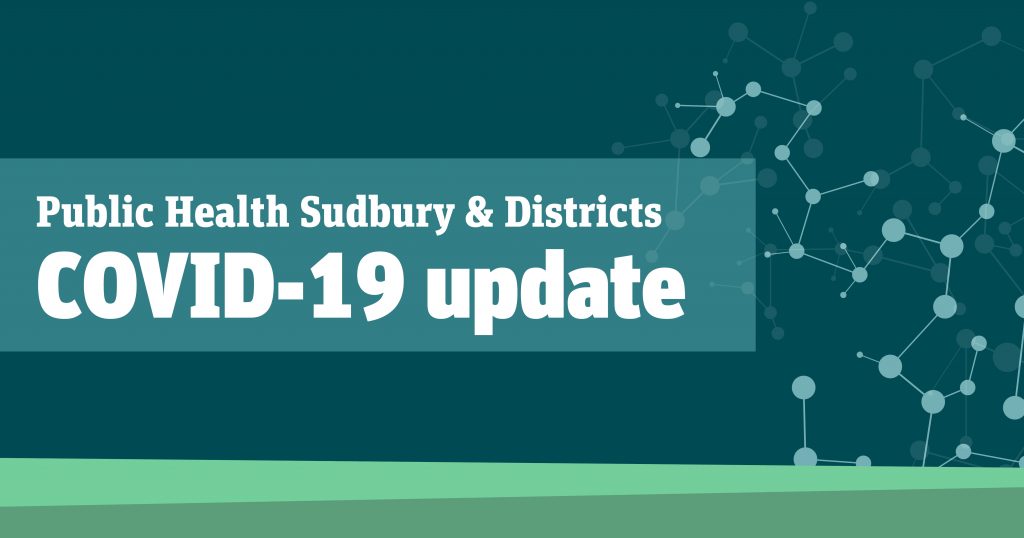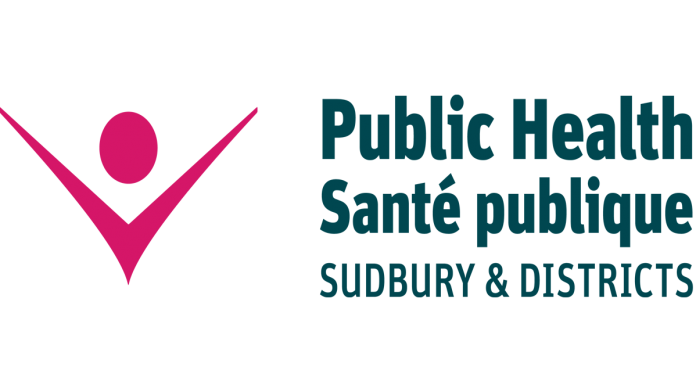As part of the next step in targeted surveillance, Public Health Sudbury & Districts is coordinating COVID-19 testing of all residents and employees in the 12 retirement homes in its service area. The surveillance testing is in addition to the ongoing priority to test any symptomatic residents and staff in retirement homes and anyone who has symptoms that could be COVID-19. Currently, there are no COVID-19 outbreaks in retirement homes within Public Health’s service area.
“Implementing a broader strategy to test every resident and employee in local retirement homes—regardless of whether they have symptoms or not—is an important next step for us to take to establish a point-in-time picture of the situation. To get this work done, we are building on the lessons and successes of surveillance testing in all long-term care homes and emergency child care settings,” said Dr. Penny Sutcliffe, Medical Officer of Health with Public Health Sudbury & Districts. “We will once again leverage our strong collaborations with our health system and community partners,” added Dr. Sutcliffe.
Every resident and staff member in a retirement home will be eligible for testing, which will occur over the coming weeks. Testing will be carried out by Community Paramedicine. Individual facility risk assessments were conducted through a partnership with Health Sciences North, Ontario Health, and Public Health to determine the priority level of each home and help establish testing schedules.
Proactive surveillance testing provides a helpful, but time-limited snapshot of COVID-19 activity. Whether test results are positive or negative, the infection prevention and control measures in place in retirement homes remain of critical importance to limit the spread and protect the health and safety of residents and staff.
In addition to the work being undertaken with retirement homes, Public Health will also consider plans to conduct proactive surveillance in other congregate settings once risk assessments are completed for each. Congregate living settings include, for example, homeless shelters, group homes, community supported living, and disability-specific communities.
Provincial directives related to safety measures are in place to help protect residents and staff in retirement homes.
Examples of precautions taken in retirement homes
- Staff and residents follow strict physical distancing guidelines.
- Actively screening anyone entering a home including staff and essentials visitors.
- Actively screening all residents twice daily for COVID-19 symptoms.
- Identifying and isolating any resident with acute respiratory illness or fever.
- All staff and essential visitors wear masks.
- Group activities are discontinued.
- Visitor restrictions are in effect.
Summary of long-term care home surveillance testing findings and actions:
- Surveillance testing was carried out in the 13 long-term care homes in the Sudbury & Manitoulin districts, and 14 cases of COVID-19 were found to date as a result. In addition, two other cases were detected before the start of targeted surveillance testing.
- Seven outbreaks were declared as a result of surveillance testing: one additional outbreak was declared prior to the start of surveillance testing. When outbreaks are declared, additional control measures are put in place, including, for example, isolating people at risk of infection and identifying and testing close contacts.
- Once the surveillance testing identified the 14 cases, Public Health conducted contact tracing with 522 close contacts that were identified by the cases. All were tested, and none were positive for COVID-19.
Updates about COVID-19 testing, confirmed cases, and outbreaks in Greater Sudbury, the District of Sudbury, and the District of Manitoulin are posted online.
If you think you may have COVID-19 symptoms or have been in close contact with someone who has it, first self-isolate, then contact an assessment centre or use the online self-assessment tool to see if you need to seek further care.
Visit Ontario’s website to learn more about the province’s response to COVID-19.





